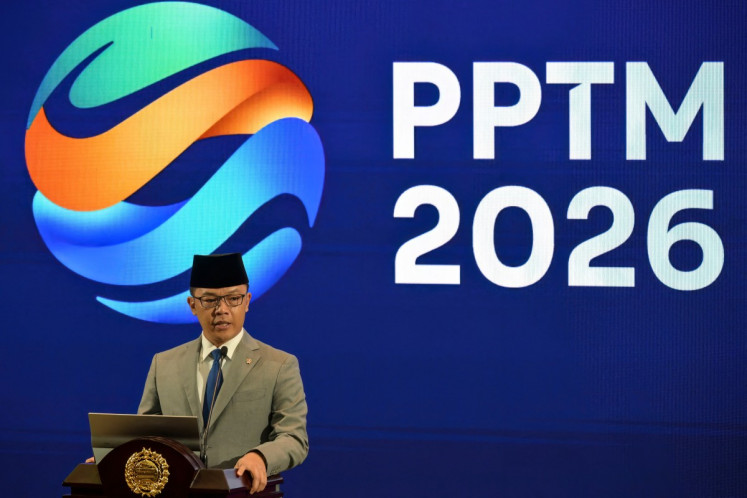Popular Reads
Top Results
Can't find what you're looking for?
View all search resultsPopular Reads
Top Results
Can't find what you're looking for?
View all search resultsMt. Leuser park engages infringers to restore ecosystem
The Mount Leuser National Park (TNGL) management has gradually cleared illegal plantations found in several locations in its North Sumatran section in the past week
Change text size
Gift Premium Articles
to Anyone
T
he Mount Leuser National Park (TNGL) management has gradually cleared illegal plantations found in several locations in its North Sumatran section in the past week.
The operations involved the infringers themselves, who had clandestinely planted rubber or oil palm trees deep in the jungle in different areas, including Sekoci, Besitang and Bahorok. TNGL covers over 800,000 hectares, straddling North Sumatra and neighboring province Aceh. It is home to various endemic flora and fauna, including endangered Sumatran tigers, orangutans, rhinoceroses and elephants.
The park management offered an option for the infringers to voluntarily cut down their illegal plants or face legal consequences.
Such a persuasive approach was deemed more effective to halt prolonged illegal activities and subsequently restore the ecosystem.
Edward Sembiring, the head of the Sumatra Environment and Forestry Law Environment Agency, called the strategy a “win-win solution”.
“The community is neither the enemy nor law enforcement, but a partner. The main objective of the operation is to keep the sustainability of Mt. Leuser National Park. Those who refuse to cooperate will face legal consequences,” he said recently.
Okto Manik, the head of TNGL’s Besitang section, reiterated its commitment to restoring the ecosystem while maintaining a relationship with residents.
“We hope that the effort to restore the TNGL ecosystem can set an example of how conservation efforts can be carried out while acknowledging the presence of humans [residents] surrounding it,” he said.
Okto acknowledged that conflicting interests over the use of conservation areas had been among the most pressing issues in managing the national park. He further said various alternative solutions and approaches had been introduced to solve the problem, but those mostly affected the local community and only further triggered resistance.
“We hope the latest approach will work,” he said.
Sudaryono, 43, an infringer who previously converted 2 ha of land inside the national park into an oil palm plantation, said he was eventually willing to end his illegal activities after six years.
“I realized that the national park had to be conserved, so it should not be converted into anything else,” he said.
He acknowledged that he was initially inspired, but there were other infringers who had been engaging in illegal activities since the 1990s. Most of them came from the province’s capital of Medan and other areas such as Binjai and Langkat.
“There were roughly 1,500 infringer families who live in the national park area,” he said, adding that 70 percent of them planted fruits while the remaining planted oil palm and rubber.
Mt. Leuser National Park has been acknowledged by UNESCO as part of the tropical rain forest heritage of Sumatra, together with Kerinci Seblat National Park, which stands in four Sumatran provinces, namely West and South Sumatra as well as Jambi and Bengkulu, and South Bukit Barisan National Park in Lampung, Bengkulu and South Sumatra.










